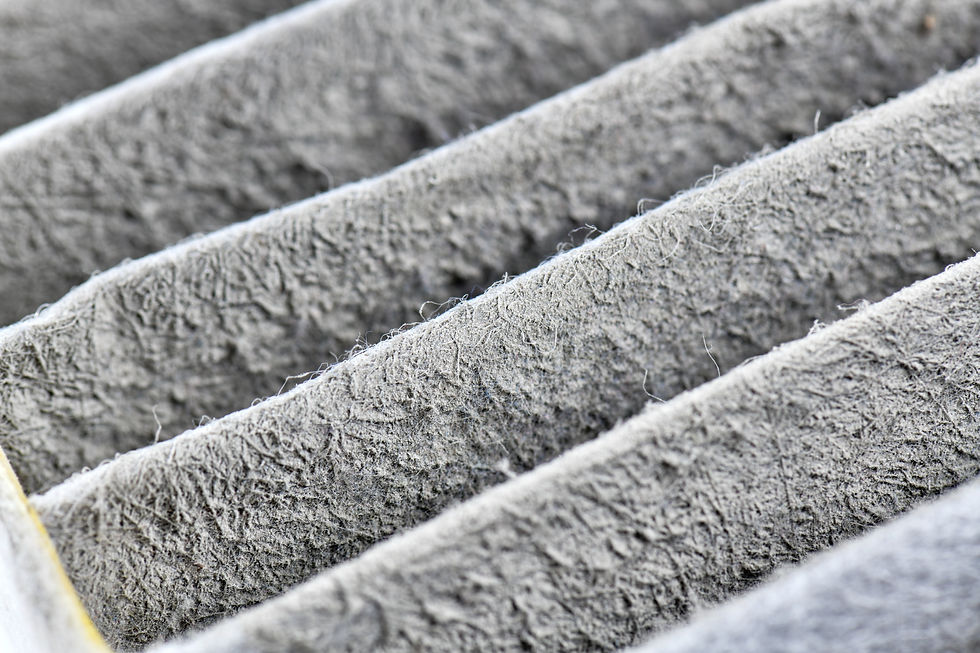Why HEPA Filters Matter in Wildfire Season
- Jennifer Crowley
- Jun 28, 2024
- 4 min read
Updated: Jul 8, 2024

As wildfire seasons grow longer and more intense, especially in regions like Canada and the western United States, maintaining clean indoor air quality has never been more important. At Blade Air, we understand the critical role that HEPA (High-Efficiency Particulate Air) filters play in protecting both residential and commercial indoor environments from the harmful effects of wildfire smoke. This guide explores why HEPA filters are essential during wildfire season and how they can make a significant difference in your air quality and overall health.

The Importance of Air Quality During Wildfire Season
Wildfire smoke is a complex mixture of gases and fine particles from burning vegetation, building materials, and other substances. The most harmful components of wildfire smoke are particulate matter (PM), especially PM2.5 (particles smaller than 2.5 micrometres). These microscopic particles can penetrate deep into the lungs and even enter the bloodstream, leading to various health issues:
Respiratory Problems: Persistent coughing, wheezing, and shortness of breath.
Aggravation of Asthma and COPD: Increased frequency and severity of attacks.
Cardiovascular Issues: Heart attacks and strokes.
Eye, Nose, and Throat Irritation: Immediate discomfort and potential long-term damage.
Long-term Health Impacts: Lung cancer and complications in vulnerable populations, such as children and pregnant women.
Understanding these risks underscores the critical need for effective air filtration during wildfire season. HEPA filters are designed to capture these dangerous particles, making them indispensable in safeguarding indoor air quality.

What is a HEPA Filter?
A HEPA filter is a type of mechanical air filter that forces air through a fine mesh, capturing harmful particles such as dust, pollen, smoke, and bacteria. To be classified as a true HEPA filter, it must meet stringent standards set by the United States Department of Energy (DOE) and effectively remove at least 99.97% of airborne particles as small as 0.3 micrometres (µm).
HEPA Filters: Essential in Wildfire Season
HEPA filters offer multiple benefits that are particularly crucial during wildfire season:
Superior Filtration Efficiency
HEPA filters are renowned for their ability to capture very fine particles, including those found in wildfire smoke. The key to their superior performance lies in their ability to trap particles that are as small as 0.3 micrometres with an efficiency rate of at least 99.97%. This ensures that even the smallest and most harmful particles are removed from the air:
Effective Against PM2.5: Given that PM2.5 is the most dangerous component of wildfire smoke, HEPA filters are highly effective in providing protection.
Captures a Range of Pollutants: In addition to smoke particles, HEPA filters also capture other pollutants such as pollen, dust mites, and pet dander.
Health Benefits
The health benefits of using HEPA filters during wildfire season are significant:
Reduces Respiratory Symptoms: People with allergies, asthma, and other respiratory conditions experience fewer symptoms.
Decreases Cardiovascular Risks: Lower exposure to airborne particles reduces the risk of heart attacks and strokes.
Improves Overall Well-being: Cleaner air contributes to better sleep, productivity, and mental clarity.
Reinforcing HEPA Filters with Activated Carbon
Many HEPA air purifiers also include activated carbon filters. While HEPA filters are designed to capture particles, activated carbon filters are effective at removing gases and odours such as volatile organic compounds (VOCs) that are released during wildfires. This combination of filters provides comprehensive air cleaning:
Odour Removal: Activated carbon filters eliminate the smoky smell associated with wildfires.
Chemical Filtration: They remove harmful chemicals such as benzene and formaldehyde.
How to Choose the Right HEPA Air Purifier
When selecting a HEPA air purifier, consider the following factors to ensure you are getting the most effective protection during wildfire season:
True HEPA Certification: Ensure the air purifier uses a true HEPA filter, meeting DOE standards for filtration efficiency.
Clean Air Delivery Rate (CADR): Look for a high CADR rating for smoke. This measures the air purifier’s efficiency in cleaning air.
Coverage Area: Match the air purifier’s coverage capacity (in square feet) to the size of your room or home area.
Filter Longevity and Ease of Replacement: Consider the lifespan of the filters and their ease and cost of replacement.
Noise Levels and Energy Efficiency: Choose a model that operates quietly and efficiently.
Using HEPA Filters: Best Practices

To maximize the effectiveness of HEPA air purifiers, follow these best practices:
Strategic Placement: Place the air purifier in the room where you spend the most time. For homes, this is often the bedroom or living room.
Continuous Operation: Keep the air purifier running 24/7 during wildfire season to maintain clean air.
Regular Maintenance: Replace HEPA and activated carbon filters according to the manufacturer’s recommendations to ensure optimal performance.
Seal Your Home: Use weatherstripping, door sweeps, and other measures to prevent outdoor air from entering your home. This reduces the burden on your air purifier.
Create a Clean Air Room: Designate a specific room with minimal outdoor air infiltration and use a high-efficiency air purifier to maintain air quality.
Blade Air: Your Partner for Clean Air
At Blade Air, we are dedicated to providing advanced air purification solutions that meet the highest standards of performance and reliability. Our flagship products, such as the HCFM-1 Portable HEPA Purifier, Pro Filter with Advanced Electromagnetic Filtration, and HEPA+ Filter, offer unmatched protection against wildfire smoke and other airborne contaminants.
Advantages of Blade Air HEPA Air Purifiers:
High-Efficiency Filtration: Our true HEPA filters effectively capture 99.99% of particles at 0.3 micrometres.
Comprehensive Coverage: Suitable for both residential and commercial spaces, providing wide-ranging protection.
As wildfire seasons become increasingly severe, HEPA filters play a crucial role in maintaining clean indoor air quality and protecting health. By investing in high-quality air purification systems and following best practices, you can significantly reduce exposure to harmful pollutants and ensure a healthier environment for yourself and your loved ones.





















